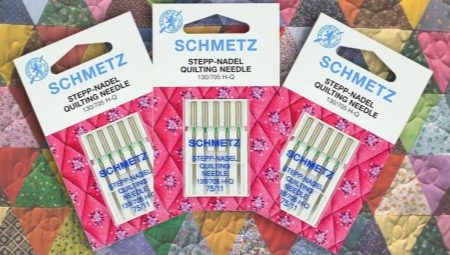Quilting and patchwork are not the same kind of needlework, but they are so often performed in combination with each other that many take them for parts of the same technique. But this is not so. The patchwork is based on stitching a single fabric from pieces of fabric of the most diverse shapes (patch - patch, scrap, patchwork - patchwork). Quilting is the quilting of multilayer products manually or by a machine (guilt - stitch). In both cases, the needle used plays an important role. How to choose it will be discussed in our article.
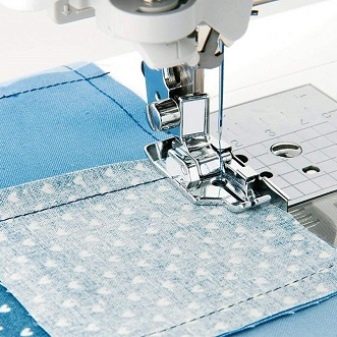
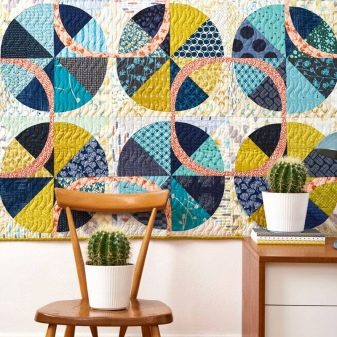
What it is?
The original quilting technique is unlimited in terms of visual possibilities. Quilting can be quilted with the simplest ornament, or you can create a real masterpiece in the form of a landscape, still life, panel. In modern development, the combined use of quilting with several needlework techniques (patchwork, embroidery, applique, collage) allows you to get beautiful decorative compositions. The top layer of a quilt in a combined version is most often a fabric sewn using a patchwork patchwork technique.
A whole direction has been formed in the industry, producing sewing machines, tools, and accessories for both quilting lovers and professionals. One of the most important tools for manual and machine quilting are needles.
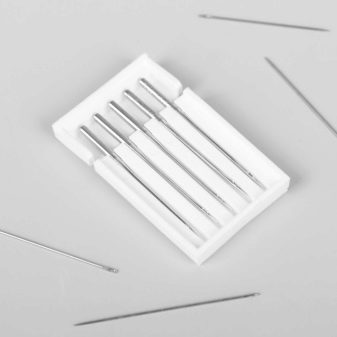
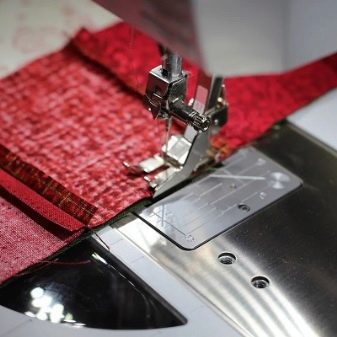
Species overview
It is the needle that is correctly selected for installation in the sewing machine that will ensure continuous operation and high quality stitches. The special needle for hand stitches is very durable, sharp and short, with perfect glide, to ensure uniform stitches and equal gaps between them.
Modern quilting needles have many characteristics: eyelet configuration, groove shape, sharpening option, etc.Some of them are even invisible to the simple eye, but a common feature of quilting needles is a particularly thin, slightly rounded point with a small eye and a special bevel that easily penetrates into the fabric without damaging the fabric structure. All these features ultimately affect the integrity of the stitch and the formation of high-quality decorative stitches without traces of punctures and missing stitches.

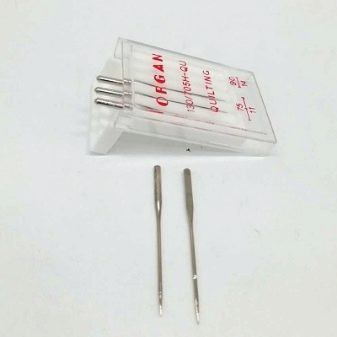
Here are some examples of popular brands of quilting needles.
- Universal needles - universal needles with the widest range of numbers - from No. 60 to No. 120, suitable for almost all types of fabrics.
- Quilting needles - Designed for sewing sandwich sandwiches and heavy fabrics.
- Machine embroidery needles - Suitable for use with metallic or delicate decorative threads.
- Top stitch needles - Super sharp, with a deep groove, available in different sizes (70–110), suitable for quilting and machine embroidery.
- Stepp-nadel quilting needle - have a special taper to preserve expensive delicate fabrics from damage. The material is nickel, the bulb marking is bright green.
- Sewing quilting needle Schmetz 130/705 H-Q has a particularly thin, slightly rounded nose. When stitching materials of different properties (for example, synthetic winterizer and tapestry), the stitches are formed very smoothly and beautifully.
- Well-proven tools of the French company Bohin, buyers leave rave reviews about them.

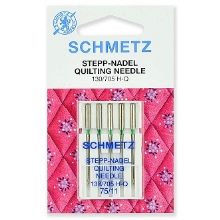
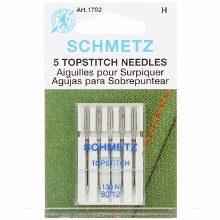
Titanium-coated needles for household machines have recently appeared on sale (previously they were produced only for industrial machines). These are expensive tools, but those who decide to buy and have already tried such needles in work, note the long life of these products.
If an ordinary universal needle has to be changed after 6–8 hours of continuous operation, then titanium-coated tools are stored as new for 80–100 hours, the comparison is impressive.

Secrets of choice
The result of work depends on the quality of the tool. The special quilting needles are perfectly smooth, short, stiff, so that with manual stitch you can easily draw stitches on the needle and freely stretch the thread through the layers of the sandwich. To better determine which quilt quilting needle, you need to try several options on small sandwiches and establish which needle is best for a particular product, as sandwiches are made of different materials. For this purpose, experienced craftswomen recommend purchasing sets of different needles. It must be said that no matter how high-quality and expensive the selected needle is, it should not be used longer than the period recommended by the manufacturer.
So that the decorative qualities of the finished product do not decrease, it is necessary to monitor the condition of the needle and timely replace with a new one. Novice patchwork masters can buy inexpensive tools, but they are less convenient to use and require more frequent replacement. It is not always possible to buy quilting needles if the city is small. Instead, knowledgeable quilters use needles for leather goods, and if they are difficult to find, they take tools for jeans or jersey. Knowing the characteristics, features and interchangeability of needles greatly facilitates the creative work of craftswomen in the technique of quilting and patchwork.
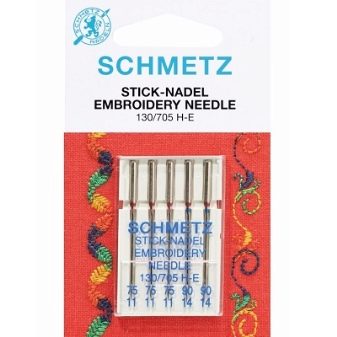

In the next video you will find a brief overview of needles for patchwork and quilting.
